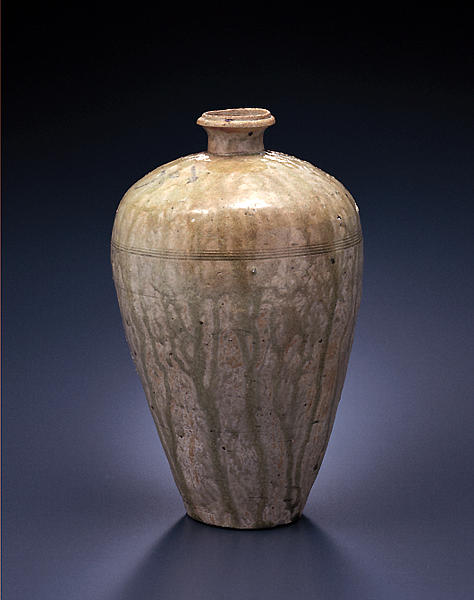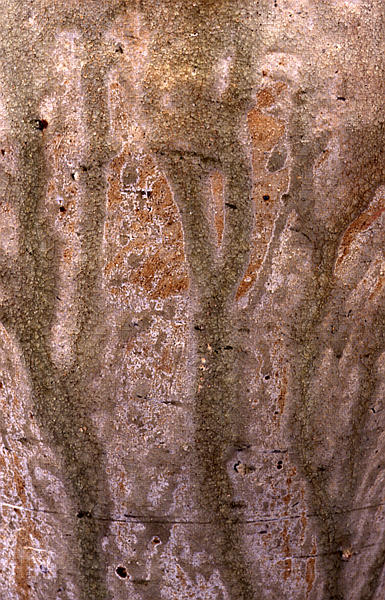Bottle
- Seto kiln, Aichi pref.
- Mid Kamakura period
- 13c
- Ko-Seto ware, ash glaze
- H-33.2 D-20
Catalogue Entry
Mid-Kamakura period, 13th century
Ko-Seto ware, ash glaze
Height, 33.2cm; mouth diameter, 5.6cm;
torso diameter, 20.0cm; base diameter, 9.7cm
Jars with 4 handles, tall bottles, and water ewers imitating Chinese white wares are some of the ceramic forms that characterize the early period of Ko-Seto ware. Ko-Seto was the only glazed ceramic ware of Japan's medieval period, and as such, by their early period, Ko-Seto ware objects were already being distributed, along with Chinese ceramics, across the majority of the Japanese mainland, from the Tohoku region in the north to Kyushu in the south.
This ash-glazed bottle form is an imitation of the so-called mei-ping shape bottle of Chinese white porcelains, and it is particularly well-formed. The bottle is characterized by a small, slightly outward-turning mouth-neck, an overall shape which drops from swelling shoulders in a elegantly subtle curve to the base, and 4 rows of combed lines that circle the swell between shoulder and torso. These elements indicate that the bottle was produced in the middle of the 13th century. The bottle was extremely well-fired, and while there is some mottling here and there, overall the ash glaze shows a good flow of light green color, spreading from the shoulders to the base, and thus is characteristic of the ash glazes of early period Ko-Seto wares. The ink inscription "ichigo ka" on the shoulder is a later addition. SN

